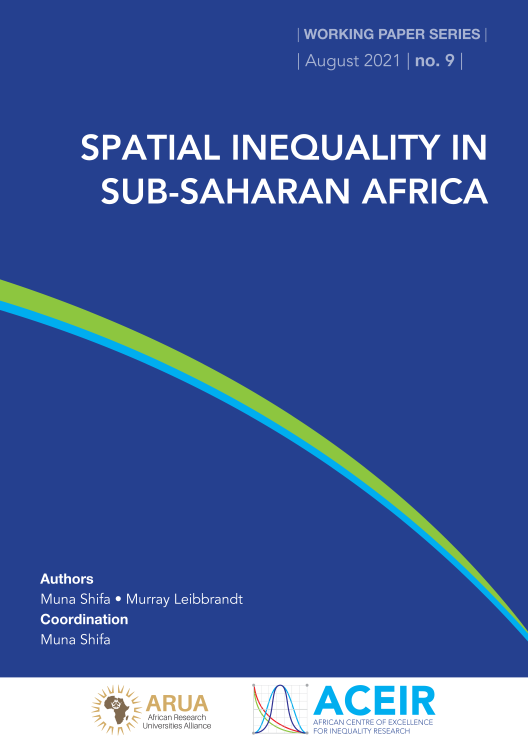Spatial inequality in sub-Saharan Africa
Muna Shifa, Murray Leibbrandt
ACEIR Working Paper no. 9, August 2021

This paper provides within-country spatial and national inequality estimates in sub-Saharan Africa (SSA) using comparable data from the Demographic Health Surveys. Two indicators are used to measure household welfare. First, detailed information on living standards indicators is used to calculate asset indices using data from 24 SSA countries with comparable data in recent years. The inequality estimates based on the asset indices are used to provide contemporary asset inequality estimates in SSA. Results reveal high levels of within-country spatial and national asset inequalities in SSA, with large variations across countries. The second indicator of household welfare is based on data on access to basic services. Access to basic services is measured by deriving an index calculated using indicators such as access to water, sanitation, electricity, a telephone, and education. Changes in inequalities in access to basic services are compared using data from 27 SSA countries that have comparable data for at least two periods between 1995 and 2018. The findings suggest that, apart from a few countries, within-country spatial and national inequalities in access to basic services have declined over time. Nevertheless, the level of inequality and the magnitude of the changes in inequality over time varies greatly across countries, and disparities in access to basic services remain quite large in some SSA countries. Our findings, using both indices, show that within-country regional inequality is a significant component of national inequality in the majority of SSA nations, with significant policy implications. Read more
